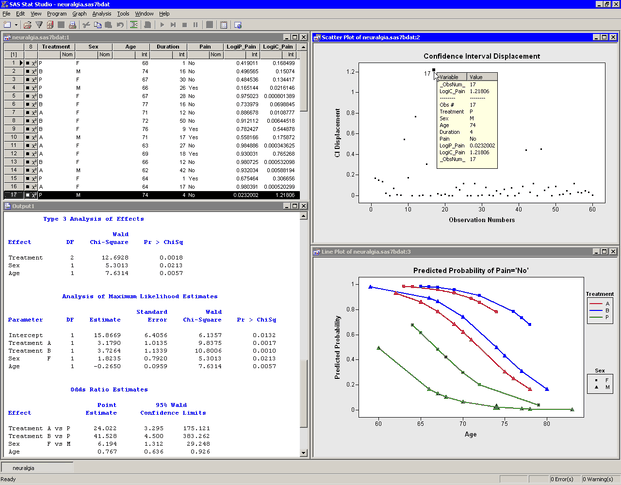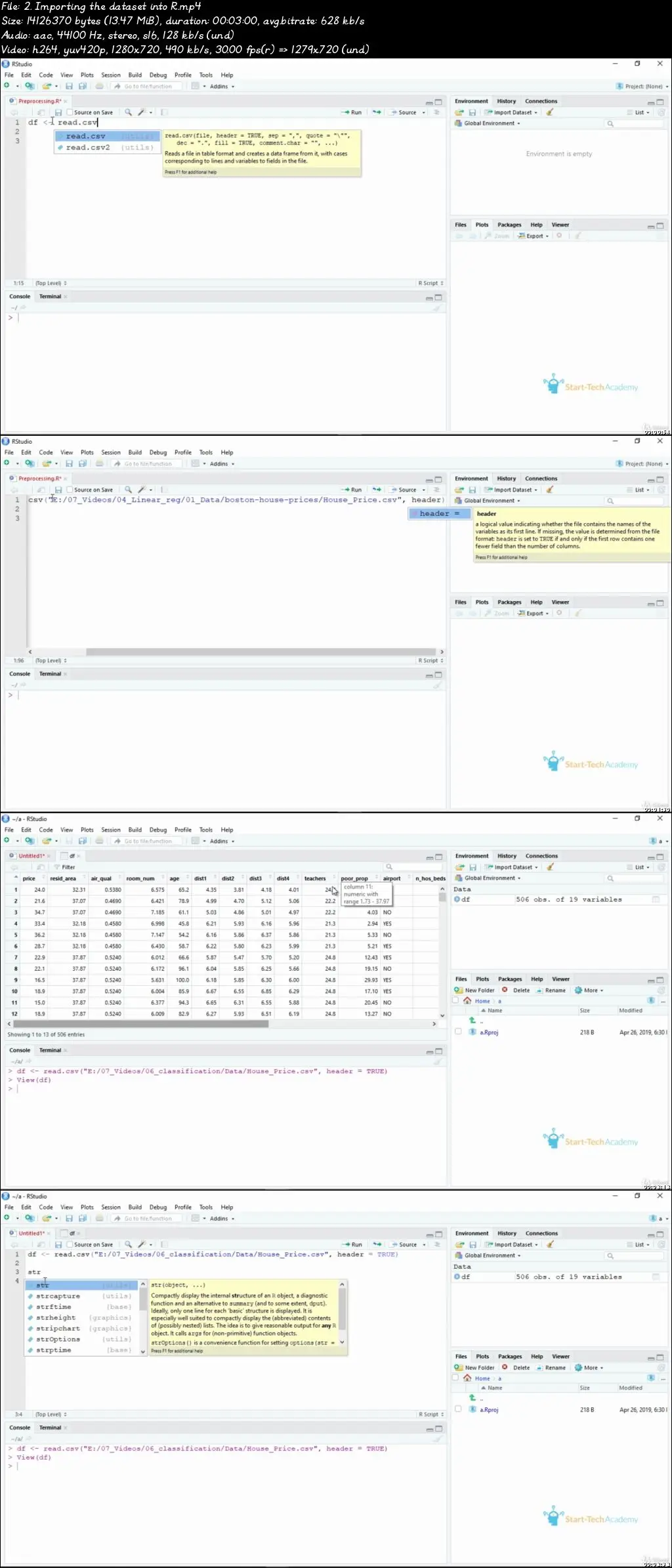

On average, the odds of vomiting is 0.98 times that of identical subjects in an age group one unit smaller.įinally, when we are looking at whether we should include a particular variable in our model (maybe it's a confounder), we can include it based on the "10% rule," where if the change in our estimate of interest changes more than 10% when we include the new covariate in the model, then we that new covariate in our model. When testing the null hypothesis that there is no association between vomiting and age we reject the null hypothesis at the 0.05 alpha level ( z = -3.89, p-value = 9.89e-05).

H a: There is an association between vomiting and age (the odds ratio is not equal to 1).H 0: There is no association between vomiting and age (the odds ratio is equal to 1).How do we test the association between vomiting and age? Groups of people in an age group one unit higher than a reference group have, on average, 0.98 times the odds of vomiting. This can be translated to e -0.02 = 0.98. This means that for a one-unit increase in age there is a 0.02 decrease in the log odds of vomiting. Thus the logistic model for these data is: This is testing the null hypothesis that the model is no better (in terms of likelihood) than a model fit with only the intercept term, i.e. This is analogous to the global F test for the overall significance of the model that comes automatically when we run the lm() command. degrees of freedom of the null model minus df of current model.deviance of "null" model minus deviance of current model (can be thought of as "likelihood").To get the significance for the overall model we use the following command: Residual deviance: 1433.9 on 1092 degrees of freedom Null deviance: 1452.3 on 1093 degrees of freedom (Dispersion parameter for binomial family taken to be 1) Glm(formula = vomiting ~ age, family = binomial(link = logit)) > summary( glm( vomiting ~ age, family = binomial(link = logit) ) ) Here, glm stands for "general linear model." Suppose we want to run the above logistic regression model in R, we use the following command: David holds a doctorate in applied statistics.To perform logistic regression in R, you need to use the glm() function. His company, Sigma Statistics and Research Limited, provides both on-line instruction and face-to-face workshops on R, and coding services in R.

That wasn’t so hard! In our next article, I will explain more about the output we got from the glm() function.Ībout the Author: David Lillis has taught R to many researchers and statisticians. We include the argument type=”response” in order to get our prediction. Now we use the predict() function to calculate the predicted probability. To do that, we create a data frame called newdata, in which we include the desired values for our prediction. Remember, our goal here is to calculate a predicted probability of a V engine, for specific values of the predictors: a weight of 2100 lbs and engine displacement of 180 cubic inches. I will explain the output in more detail in the next article, but for now, let’s continue with our calculations. The model output is somewhat different from that of an ordinary least squares model. We see from the estimates of the coefficients that weight influences vs positively, while displacement has a slightly negative effect. Residual deviance: 21.40 on 29 degrees of freedomĪIC: 27.4 Number of Fisher Scoring iterations: 6 codes: 0 ‘***’ 0.001 ‘**’ 0.01 ‘*’ 0.05 ‘.’ 0.1 ‘ ’ 1 (Dispersion parameter for binomial family taken to be 1) Null deviance: 43.86 on 31 degrees of freedom We use the glm() function, include the variables in the usual way, and specify a binomial error distribution, as follows: model |z|) We want to create a model that helps us to predict the probability of a vehicle having a V engine or a straight engine given a weight of 2100 lbs and engine displacement of 180 cubic inches.

In the mtcars data set, the variable vs indicates if a car has a V engine or a straight engine. Let’s take a look at a simple example where we model binary data. In this blog post, we explore the use of R’s glm() command on one such data type. The glm() command is designed to perform generalized linear models (regressions) on binary outcome data, count data, probability data, proportion data and many other data types. However, much data of interest to statisticians and researchers are not continuous and so other methods must be used to create useful predictive models. Ordinary Least Squares regression provides linear models of continuous variables.


 0 kommentar(er)
0 kommentar(er)
